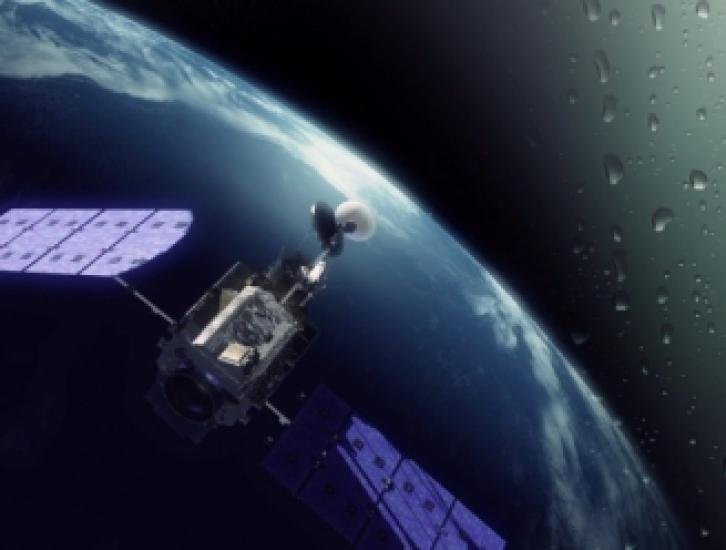Update 1/8/14:
"Water Falls" is coming soon to a sphere near you!
Escaping from the ocean, then surfing on clouds until taking that fateful fall back to Earth, water is on a journey. NASA's new short film "Water Falls" invites the public along for the ride as scientists follow water around the globe — on a globe.
Produced specifically for the Science on a Sphere media platform in partnership with the Global Precipitation Measurement, or GPM, mission, "Water Falls" tells the story of the movement of water throughout the planet on a spherical screen — literally giving a 360-degree view of water. The film introduces viewers to the water cycle. It shows how water in the atmosphere regulates climate, the global and local consequences of too much or too little rain, water's effect on society from food production to urban sustainability, and the role of water in dangerous storms and hurricanes.
Download Video in HD Formats
"Scientists need to know how much it rains and snows globally to better understand a range of applications from natural disasters to crop modeling and weather prediction," said Dalia Kirschbaum, GPM applications scientist and education and public outreach coordinator at NASA's Goddard Space Flight Center in Greenbelt, Md.
The GPM mission is an international satellite mission led by NASA and the Japan Aerospace Exploration Agency to measure when, where and how much it rains or snows around the world every three hours. The GPM Core Observatory is set to launch in early 2014.
That global perspective is reflected in "Water Falls" as it plays on a globe-like screen. Science on a Sphere technology consists of a 50-pound hollow sphere made from carbon fiber, the same material used to make standard theatrical movie screens. About 6 feet in diameter, the screen hangs at eye level and is suspended from the ceiling by three carbon fiber cables. Four projectors surround the sphere, each covering a 90-degree section of the screen that together display seamless, fully spherical images for depicting animations, visualizations or live-action video.
The film is at the intersection of art and science. It combines visualizations of real data, abstract animations to illustrate science concepts, and live action photography — all using the latest techniques for filming on the technically challenging sphere. But Michael Starobin, the film’s producer, is particularly excited about the story line of "Water Falls."
"While I spend a lot of my time thinking about the technology, the most important part is always the story," said Starobin, who worked with GPM scientists and education and outreach staff to write the script. "Both the satellite mission and the water cycle that it will study describe intricate webs of moving parts, and the film presents these complex interworkings in artistic and approachable ways."
The 9-minute film will premiere at the Space Foundation Discovery Center in Colorado Springs, Colo., on Oct. 10 and at The W!LD Center in Tupper Lake, N.Y., on Oct. 12. The film will then be released worldwide to the other 100 Science on a Sphere platforms around the world on Oct. 23, when the film will debut at Goddard's Visitor Center. A portion of the film’s spherical animations will also be adapted for a 2-D viewing screen and developed into short videos to further explore some of the science concepts discussed in the film.
In addition to the film, "Water Falls" will have accompanying educational notes and playlists for docents. These will include a selection of animations from the film as well as other data visualizations from GPM, the Tropical Rainfall Measuring Mission and other NASA satellite missions, which will be made available to all Science on a Sphere venues. Several lesson plans designed for teachers to use before and after viewing the film will also be available, as well as independent lessons and activities for teachers to conduct in their classrooms with accompanying short videos.
"'Water Falls' underscores how important it is to have accurate precipitation measurements to understand our planet," said Kirschbaum. "Rain or snow, or both, affect everyone on the planet in some way every day. With a better understanding of the science, the GPM mission can help a lot of people around the world."


